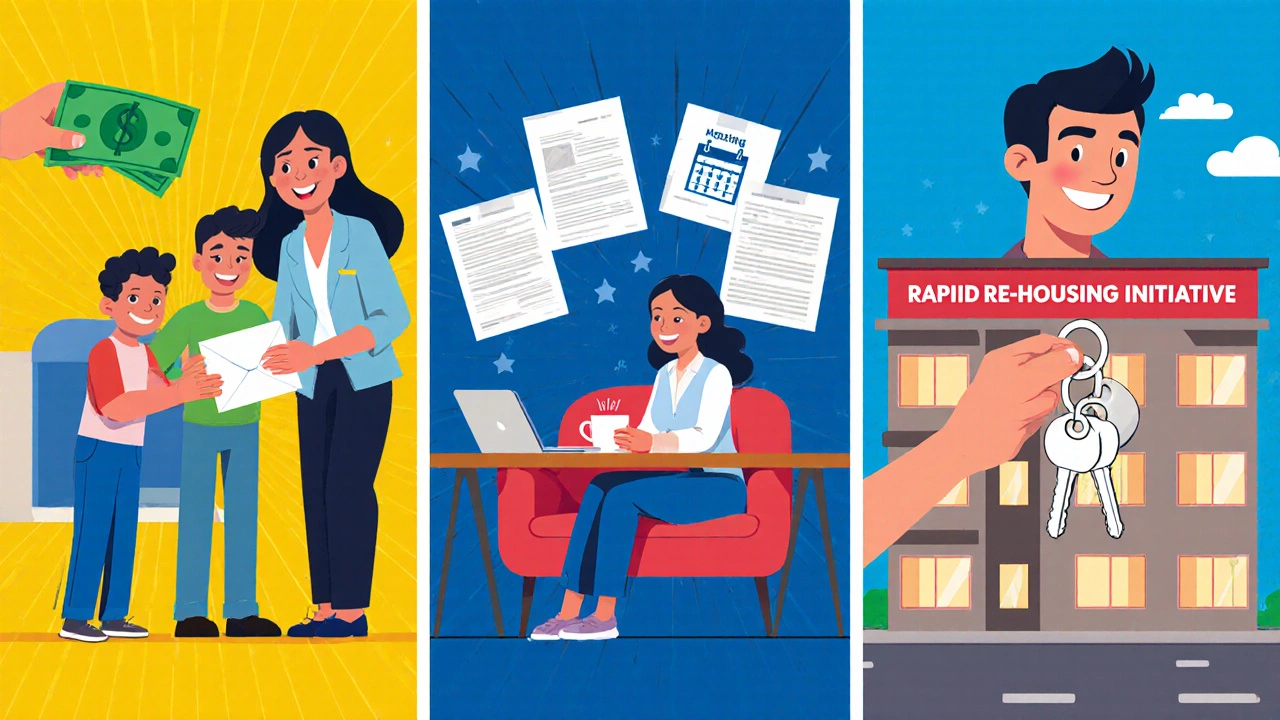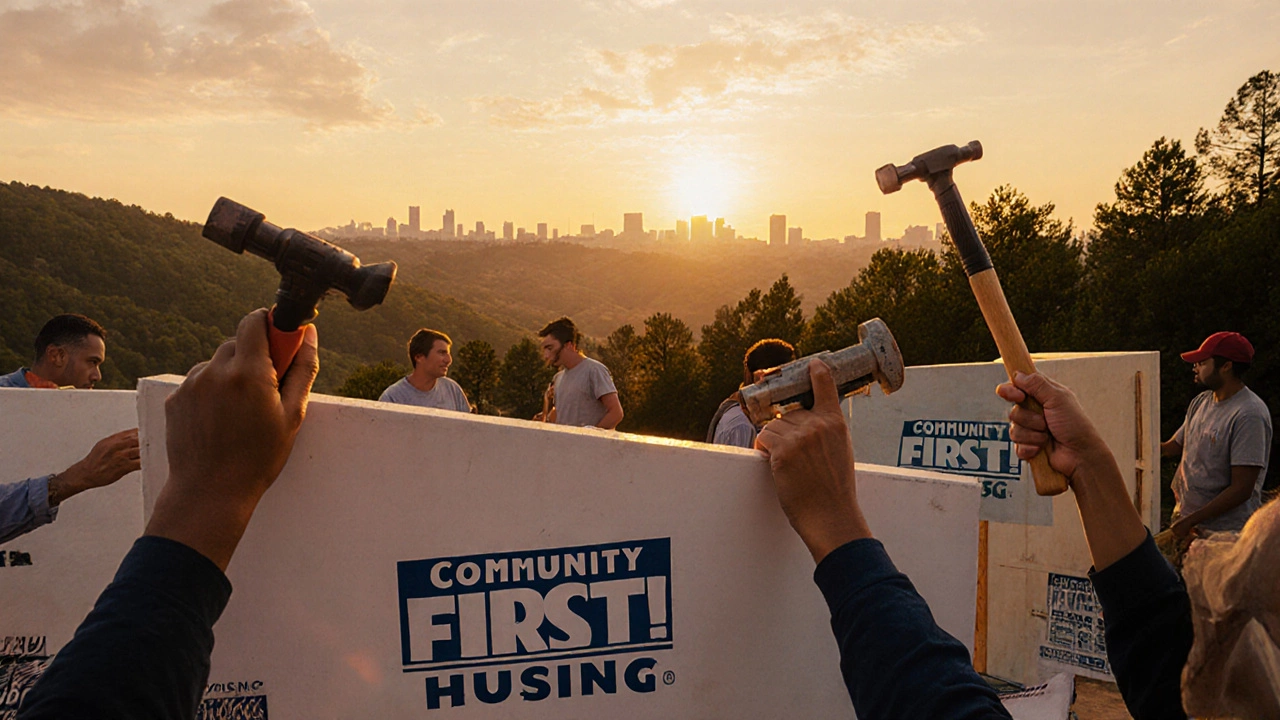Arkansas Homelessness Prevention Impact Calculator
How Your Donation Makes a Difference
Based on Arkansas Housing and Community Development Authority (AHCDA) program data:
Average assistance: $1,500 per family
2023-24 impact: 4,200 families prevented from homelessness
Quick Takeaways
- The Arkansas Housing and Community Development Authority (AHCDA) runs the state’s biggest homelessness‑prevention portfolio.
- Key programs include the Emergency Assistance Program, Homelessness Prevention Grant, and Rapid Re‑Housing Initiative.
- Partner nonprofits such as Volunteers of America Arkansas and Family Promise of Little Rock fill the gaps with shelter, case management, and employment services.
- Volunteers can contribute time, money, or in‑kind donations through clear, vetted channels.
- Tracking outcomes (e.g., the 2023‑2024 reduction of chronic homelessness by 12%) shows the collaborative model works.
Why Arkansas Homelessness Matters
In 2023 the U.S. Inter‑Agency Council on Homelessness reported that Arkansas had roughly 9,800 individuals experiencing homelessness, a 5% rise from the previous year. Urban centers like Little Rock and Fayetteville account for 70% of those cases, while rural counties see spikes during agricultural off‑seasons. The cost of emergency medical care, law‑enforcement interventions, and shelter overflow runs into millions of dollars each year-money that could be redirected toward sustainable housing if prevention takes the front seat.
That backdrop is why Arkansas homelessness has become a rallying point for both government and the nonprofit sector.

The Lead Agency: Arkansas Housing and Community Development Authority
When Arkansas looks to stop people from losing a roof, Arkansas Housing and Community Development Authority is the state agency that designs, funds, and oversees every major homelessness‑prevention effort. AHCDA administers more than $120million in annual housing assistance, from low‑income rental subsidies to emergency cash grants. Established in 1975, the agency shifted its focus to prevention in 2012 after a statewide study showed that early intervention cut long‑term shelter costs by up to 30%.
AHCDA’s mandate includes three core pillars:
- Financial Safety Nets: Direct cash assistance for rent arrears, utility bills, and moving expenses.
- Housing Stability Services: Case management, eviction prevention counseling, and landlord mediation.
- Community Partnerships: Leveraging nonprofit expertise and private‑sector resources to extend reach.
Signature Programs That Keep People Home
Below is a quick snapshot of the programs that deliver measurable results.
| Program | Target Group | Typical Funding | 2023‑24 Impact |
|---|---|---|---|
| Emergency Assistance Program (EAP) | Households at risk of eviction | $500‑$2,500 per case | 4,200 families prevented |
| Homelessness Prevention Grant (HPG) | Nonprofit service providers | Up to $250,000 per project | 12 nonprofit pilots launched |
| Rapid Re‑Housing Initiative (RRHI) | Chronically homeless individuals | Housing vouchers + case management | 1,150 people housed within 90 days |
All three programs require applicants to submit a detailed outcomes plan, which the agency reviews quarterly. Success is measured by “housing stability months”-the number of months a household remains housed after assistance ends.
Key Partner Organizations
AHCDA doesn’t work in a vacuum. A network of nonprofits fills service gaps that government funding can’t cover alone. Here are the most active partners:
Volunteers of America Arkansas operates emergency shelters, transitional housing, and job‑training programs in Little Rock, North Little Rock, and Pine Bluff. Since 2019 they have placed over 3,600 individuals into permanent homes through their “Housing First” model.
The Salvation Army Arkansas runs four winter‑day shelters and a 24‑hour crisis line that connects callers to local aid. Their “Family Restoration” unit focuses on keeping families together by providing childcare vouchers and counseling.
Community First! Housing is a nonprofit developer that builds affordable apartments across the state, with a recent 150‑unit project in Fayetteville. They partner with AHCDA to apply housing vouchers directly to new units, speeding up placement.
Family Promise of Little Rock provides emergency shelter, case management, and a “Earn‑to‑Learn” program that helps participants gain certifications in trades. Their 2024 pilot reduced re‑entry into shelter by 28%.
Arkansas Department of Human Services coordinates Medicaid, SNAP, and child‑care assistance, ensuring families have the basics that keep them housed. While not a shelter provider, its data analytics team feeds real‑time eviction risk alerts to AHCDA.

How You Can Help
Even if you live outside Arkansas, contributions travel fast through established channels. Here are three proven ways to make an impact:
- Donate directly to AHCDA’s Emergency Assistance Program. The agency publishes a secure donation portal that earmarks funds for rent‑pay assistance.
- Volunteer with a local partner. Volunteers of America Arkansas runs a “Weekend Build” series where you can help construct new affordable units.
- Support policy advocacy. Join the Arkansas Housing Coalition’s email list to receive updates on state budget hearings and sign petitions that protect housing funds.
When you give, ask for a receipt that specifies the program code (e.g., “EAP‑2025”) so you can track how the money was used.
Checklist for Getting Involved
- Identify the program or organization that aligns with your skill set.
- Verify the nonprofit’s 501(c)(3) status via Guidestar or the state charity registry.
- Set a realistic contribution goal-$50 monthly, 5hours of volunteer time, or one social‑media post per week.
- Track your impact using the agency’s public dashboards (AHCDA publishes quarterly “Homelessness Prevention Metrics”).
- Share your story to inspire others; personal anecdotes boost community momentum.
Frequently Asked Questions
Which organization leads homelessness prevention in Arkansas?
The Arkansas Housing and Community Development Authority (AHCDA) is the state‑level agency that designs, funds, and monitors the largest prevention programs.
How does the Emergency Assistance Program work?
EAP provides short‑term cash grants-typically $500 to $2,500-to families facing imminent eviction. Applicants must show proof of income and a pending eviction notice. Funds are disbursed within 10business days.
Can I donate if I’m not an Arkansas resident?
Yes. AHCDA’s online donation portal accepts nationwide contributions and allocates them to statewide prevention initiatives.
What role do nonprofits play alongside AHCDA?
Nonprofits deliver direct services-shelter, case management, job training-while AHCDA provides the funding framework. Partnerships are formalized through grant agreements and shared outcome metrics.
How can I volunteer without traveling to Arkansas?
Many Arkansas nonprofits run virtual mentorship, grant‑writing, and administrative projects. Sign up on their websites to receive remote volunteer tasks.
